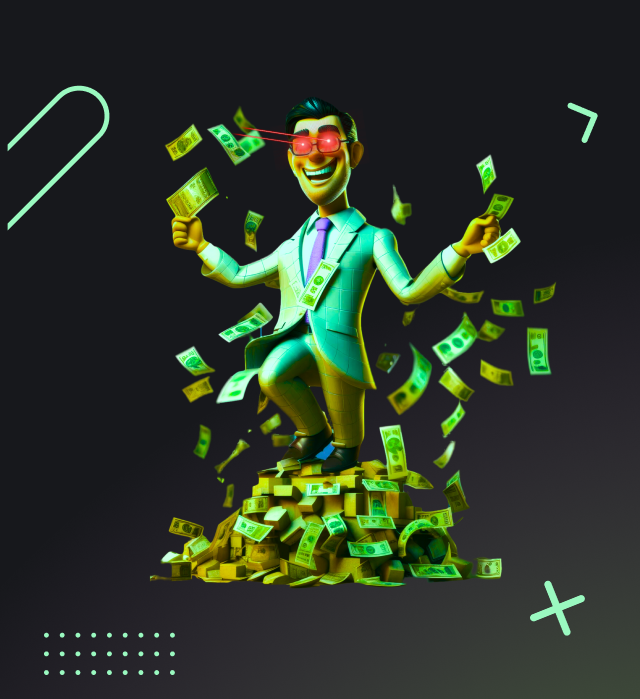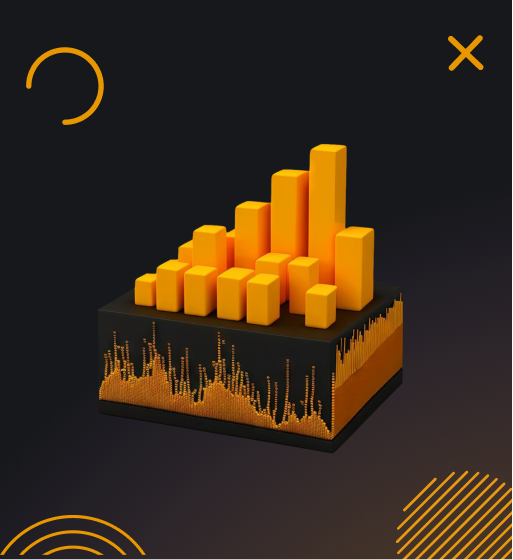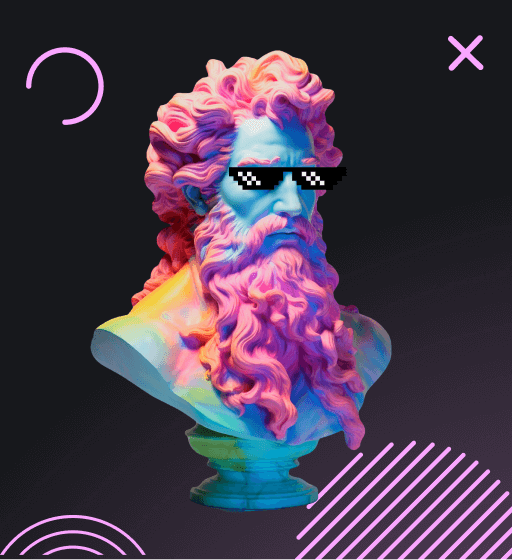Non-fungible tokens (NFTs) have exploded in popularity recently. As a DeFi user, you may be wondering what NFTs are all about and how they relate to decentralized finance.
In this comprehensive guide, we'll cover everything you need to know about NFTs, including:
- What are NFTs and how they work
- Real-world use cases
- How to buy, sell, and create NFTs
- Tips for investing in NFTs
- The future of NFTs and their role in Web3
Let's dive in!
What Are NFTs?
NFT stands for "non-fungible token."
Non-fungible means the asset is unique and can't be replaced by an identical item. For example, a Bitcoin is fungible - 1 BTC equals any other 1 BTC. But an NFT is unique - no other NFT will have the exact same properties.
NFTs are digital assets that represent ownership of a unique physical or digital item, such as:
- Digital art
- Collectibles like trading cards
- In-game items
- Music
- Videos
- Virtual avatars and metaverse items
- Tweets
- Digital land deeds
Each NFT:
- Has a unique identifier code
- Is indivisible - you can't trade partial ownership of an NFT
- Is not interchangeable with another NFT
NFTs prove authentic ownership of a digital asset by recording the details on a blockchain ledger. An NFT acts like a certificate of authenticity for a digital asset.
How NFTs Work
Most NFTs are issued on the Ethereum and Solana blockchain at the moment, using standards like ERC-721 and ERC-1155 in the case of Ethereum and Metaplex in the case of Solana. These standards allow the creation of unique digital assets.
For example, when an artist mints an NFT for their artwork, a token is generated that links to that specific creative work. This token is then sold to a collector and the details are recorded on the blockchain.
The collector now owns the official version of that artwork - the NFT proves their ownership and authenticity of that digital art piece. All future sales and trades of the artwork will be updated on-chain.
NFTs can also have additional features like:
- Proof of scarcity: The NFT supply can be limited to add exclusivity and value.
- Royalties: Original creators can earn royalties automatically on all future sales.
- Metadata: Extra data like descriptions, attributes, and other information can be stored in the NFT.
- Interoperability: NFTs from different platforms can interact through the blockchain.
- Composability: NFTs can be combined together to create new NFTs.
Real World NFT Use Cases
Here are some leading real-world examples demonstrating the versatility of NFT applications:
Digital Art
Digital artists are using NFTs to sell their work. For example, graphic designer Beeple sold an NFT collage for over $69 million at Christie's auction house.
NFTs provide digital artists control over ownership and scarcity for their creative work. They also earn royalties automatically on secondary sales.
Collectibles
NFTs are ideal for creating unique digital collectibles and proving ownership. Dapper Labs' NBA Top Shot has seen over $780 million in sales for its basketball video highlight NFTs.
Other popular collectible NFT projects include CryptoPunks, Bored Ape Yacht Club, Cool Cats, and more.
Gaming Assets
In-game assets like skins, weapons, avatars, and tokens can be tokenized as NFTs. This gives players true ownership of rare gaming items.
Games like Axie Infinity and The Sandbox have incorporated NFTs into their crypto game economies.
Music
Artists like 3LAU and Kings of Leon have released albums as NFTs to engage fans in new ways. Music NFTs can also represent exclusive perks like VIP access and memorabilia.
Additionally, NFTs enable musicians to earn royalties directly from secondary sales.
Domain Names
NFT domain projects like Ethereum Name Service (ENS) are using NFTs to create blockchain-based domain names. Owning the NFT proves ownership of the domain.
For example, the wallet address ENS: mywallet.eth could be tied to the NFT for mywallet.eth.
Virtual Land
Virtual worlds like Decentraland, Cryptovoxels, and The Sandbox are using NFTs to sell virtual land parcels. Owners can build experiences on their virtual land NFTs.
As metaverses grow in adoption, virtual real estate is attracting investors' interest.
Event Tickets
NFTs provide a way to sell event tickets and prove ticket ownership in a decentralized way. NFT tickets can't be duplicated or counterfeited.
Platforms like Yellowheart are selling event tickets as NFTs that are tradeable on secondary markets.
How to Buy and Sell NFTs
If you want to start purchasing NFTs, here are a few options:
NFT Marketplaces
Open marketplaces like OpenSea, Tensor, Rarible, MagicEden, and SuperRare allow anyone to buy, sell, and mint new NFTs. These are popular places to find digital art and collections.
You'll need a Web3 wallet like Ned Wallet connected to browse and purchase. Look for active communities with high-quality work when evaluating projects.
Direct from Artists
Many artists choose to sell their NFT work directly through their own website or platform. This allows them to control the terms and build community.
For example, musician Grimes sold $6 million worth of her NFT art directly to collectors. Buying direct like this requires more research.
Social Token Platforms
New platforms like Roll and Bonfida allow creators to launch their own social tokens and NFTs. These platforms handle the technical backend.
As an investor, this is an opportunity to get early access to emerging creator NFT projects.
Gaming Platforms
If you want in-game NFT assets, browse gaming platforms like Axie Infinity and The Sandbox that incorporate NFTs into their economies.
You can purchase rare NFTs directly from other players or through their own NFT marketplace integrations.
Auction Houses
Major auction houses like Christie's and Sotheby's have started holding NFT art auctions. This adds more legitimacy to the NFT art market.
To bid, you'll likely need to complete an application and have funds ready. Expect strong competition on high-profile pieces.
Decentralized Exchanges
Some NFTs, especially newer projects, will only be available on DEXs like Uniswap or SushiSwap through liquidity pools.
You need to already own crypto like ETH to exchange for these NFT assets. The assets may not yet be listed on aggregators like CoinGecko.
How to Create Your Own NFTs
Want to mint your own NFTs? Here are a few options:
Use an NFT Marketplace
Many NFT marketplaces like OpenSea allow creators to easily mint new NFTs for free. This just requires connecting your crypto wallet.
It's simple to create NFTs of digital art, photography, music, video, and more on platforms like OpenSea and Rarible.
Use NFT Tools
Dedicated NFT creator tools are emerging to simplify generating NFTs. For example, Mintable and Lazy let you quickly mint NFTs from assets.
These sites handle the NFT infrastructure so creators can focus on their digital IP.
Write Your Own Smart Contract
If you have blockchain development experience, you can write your own smart contract to issue NFTs. This provides the most control and customization.
Algorithms like Codable can also auto-generate the boilerplate code for you based on your preferences.
Hybrid Approach
A balanced approach is using an NFT marketplace's built-in tools, then displaying your NFT art on your own website. This provides independence while leveraging the marketplace's community.
For example, artist Grimes sold her NFT works through Nifty Gateway but displayed them on her own site.
The Future of NFTs
NFT adoption is still in the early innings, but heading towards mainstream usage and trillion-dollar potential value according to crypto research firm Delphi Digital.
Here are some predicted ways NFTs will evolve next:
- Celebrity engagement - More celebrities launching branded NFT drops for superfans.
- Music innovation - Artists using NFTs for new revenue streams like direct fan engagement.
- Gaming integration - Major gaming publishers will adopt NFTs into flagship titles.
- Social usage - NFTs for social media engagement, profiles, community benefits, and flexing online.
- Virtual worlds - NFTs will play a key role in expanding metaverse virtual worlds and economies.
- Physical asset tokenization - More real-world assets like real estate and luxury goods will be tokenized with NFTs.
Key Takeaways
Here are the core takeaways:
- NFTs are unique blockchain-based assets that represent ownership of digital or physical items.
- Popular use cases include digital art, collectibles, gaming assets, music, domain names, tickets, and more.
- Marketplaces like OpenSea allow anyone to buy, sell, and create NFTs easily.
- Look for high-quality niche projects with strong community value.
- NFT tech will expand into more mainstream applications and trillion-dollar potential markets.
NFTs introduce exciting new opportunities for DeFi users - including earning yield on NFTs as collateral, fractionalized NFT investing, and bridging NFTs cross-chain.
As assets and community shift toward Web3, understanding this emerging NFT landscape is key!
Frequently Asked Questions
Here are answers to some common questions about NFTs:
What makes NFTs valuable?
NFT value comes from the demand for scarce digital content, social signaling, community status, speculation, and utility in niche ecosystems like games. Provenance as the "official" copy also drives value.
How can you display NFTs?
NFT art can be showcased in metaverse galleries, on digital frames, as your social media avatar, printed on physical canvases, or simply flexed online. Music NFTs can be played in your metaverse spaces.
What are fractionalized NFTs?
Fractional NFT platforms like Fractional.art allow you to buy "shares" of an NFT, enabling more investors to own a portion of rare NFT assets.
Are NFTs a good investment?
NFTs are speculative investments in nascent technology. Focus on projects with strong communities, reputable founders, and niche demand to maximize potential ROI.
What are "lazy minting" and "gasless minting?"
These methods allow creators to mint NFTs without paying blockchain gas fees upfront. The buyer covers the gas fee at the time of purchase.
How do NFT games work?
NFT games involve owning in-game assets like avatars, tokens or weapons as NFTs with verifiable scarcity and value. These assets can be earned and traded within metaverse economies.
Can you sell an NFT after buying it?
Yes, NFTs are built for transferability. However, the original artist can still earn royalties from any secondary sales, depending on how it's structured.
What are blue chip NFTs?
Blue chip NFTs are premier collections like CryptoPunks and Bored Apes with high demand, premium prices, cultural significance, and expected longevity.
Hopefully, this guide gives you a solid understanding of how NFTs work and their possibilities for DeFi!







